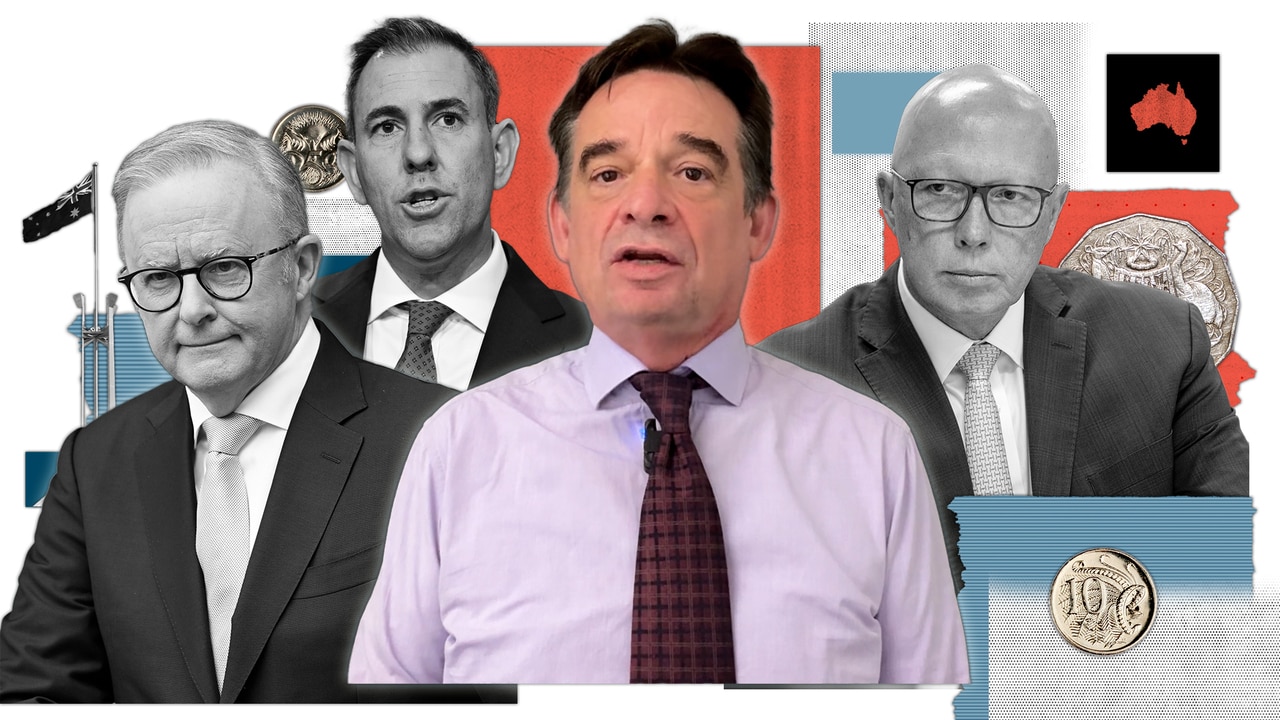Election 2025: Anthony Albanese at odds with RBA on productivity, wages
Anthony Albanese has contradicted the Reserve Bank governor on wages, saying they should go up by more than inflation regardless of productivity growth.

Workers in low productivity sectors are among the biggest winners from a $1bn-a-year wages boost under Labor’s fair pay laws, new analysis has revealed, as Anthony Albanese challenged the Reserve Bank’s and economists’ assertion that higher pay without higher productivity is dangerous for the economy.
The Prime Minister contradicted RBA governor Michele Bullock on Wednesday, saying wages should go up by more than inflation and regardless of productivity growth, much to the dismay of economists.
“There has been wages growth and productivity growth has been lower,” Mr Albanese said.
“That is, wages have increased more than inflation for five quarters in a row under my government. That’s a conscious decision that we have made, and something that we’re very proud of.”
Employment Minister Murray Watt will cite a new study from the Labor-aligned McKell Institute on Thursday showing the Albanese government’s Same Job, Same Pay laws were fuelling pay rises.
“Peter Dutton and the Coalition want to scrap these laws, the very laws that are making sure people are being paid fairly,” Senator Watt said.
While workers might be paid more, many of the sectors have shown a big slide in productivity.
The McKell study found that 1500 labour hire mine workers, for example, had seen average pay rises of around $33,500 each, with some receiving up to $60,000. At the same time the Productivity Commission showed last week that mining labour productivity had dropped 2.5 per cent in the past quarter and is down 1.3 per cent in the past year.
Warehouse workers, which the report says are “also seeing strong wage gains”, belong to sectors the PC said suffered a 3.4 per cent plunge in productivity in the past quarter.
McKell Institute chief executive Ed Cavanough said the uplift in wages expected from the laws would deliver the mining workers an annual wage uplift of about $200m and refuted that the majority of pay rises were in industries that had shown a decline in productivity.
“We have found that the total annual $920m uplift in some of these Same Job, Same Pay laws have delivered pay rises in sectors that have not seen the concerns about productivity that we have seen in other sectors,” he said.
Labor filed a submission on Tuesday to the independent Fair Work Commission which decides on pay rises for Australia’s award workers, asking for it to go further than it normally would by giving a real wage increase instead of one that met inflation.
On Wednesday, the Australian Chamber of Commerce and Industry made its submission to the Fair Work Commission, arguing for a wage increase of no more than 2.5 per cent. The current underlying inflation rate in Australia is 2.7 per cent, with headline inflation at 2.4 per cent. Labour productivity overall is -1.2 per cent.
ACCI chief executive Andrew McKellar said any rise above inflation would be at the expense of small to medium-sized businesses.
Last year, the Fair Work Commission wage panel said it could not justify lifting wages any higher because of weak productivity.
Economists said having higher wages than inflation at a time of lower productivity was dangerous.
Macro Economic Advisory chief economist Stephen Anthony said that was “not a good strategy”.
“You can’t think that paying people more will lift productivity. What has been happening in the economy is that we have been running down productivity and, at times, paying workers more for it and that makes it increasingly expensive to employ more Australians. So you end up in a vicious cycle where you have higher labour costs and lower output,” Mr Anthony said

KPMG chief economist Brendan Rynne said there was a trade off in having higher wages at a time of lower productivity.
“You can have higher wages when you have lower productivity but it will come at the cost of how many people will be employed. You can’t have wage growth and employment growth without productivity. If you do its because government underpins that with non-market jobs.”
Oxford Economics chief economist Sean Langcake said higher wages and lower productivity meant higher labour unit costs which is a key measure for the RBA in deciding on interest rates.
“It puts a lot of pressure on services inflation which is very high at the moment and that’s why we think the RBA’s February rate cut will be in isolation.”
After keeping interest rates on hold on Tuesday for fear of resurgent inflation, the RBA board noted that productivity growth had not picked up and that growth in unit labour costs remained high.

Ms Bullock said this was a dangerous situation and should be avoided.
“If productivity didn’t pick up, then that means that the rate of nominal wages growth that can be sustained and be in line with the inflation target is lower,” she said.
Without productivity, higher wages just push inflation up and that prevents the RBA from cutting interest rates.
Peter Dutton and opposition Treasury spokesman Angus Taylor said the Prime Minister was playing politics on wages, adding they supported increases only if productivity was improving.
“The Prime Minister’s here trying to find political opportunities. He’s trying to politicise what is an independent decision of the Fair Work Commission. We all support an increase in wages. We support the decision of the Fair Work Commission. And that’s exactly as the economy should work.”
Mr Taylor said he “wanted higher wages, but most of all, we want higher real wages”.
“The Reserve Bank knows that if productivity is sustainably beating the cost-of-living crisis, then getting real wages up and making sure Australians are more prosperous is not impossible.”





To join the conversation, please log in. Don't have an account? Register
Join the conversation, you are commenting as Logout